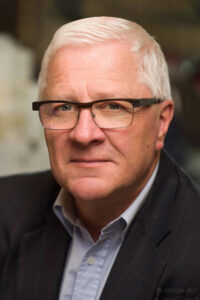Forum participants consider role of cancer stem cells

Cancer stem cells are real. But not in all cancers.
“Cancer stem cells are not cancers of stem cells,” said Irving Weissman, MD, professor of pathology and developmental biology and director of the Institute of Cell Biology and Regenerative Medicine, Stanford University School of Medicine. “The only self-renewing cells, at least in the hematopoietic system, is the hematopoietic stem cell. Mutations that accumulate in stem cells may lead to neoplastic proliferation of primitive progenitors downstream of stem cells.”
Weissman spoke during the Forum Are There Cancer Stem Cells? The Forum is available on replay for registrants through June 21, 2021.
The session’s three panelists agreed that there are, indeed, cancer stem cells, and all brought their own definitions, caveats, and questions.
Hematopoietic stem cells (HSCs) can accumulate mutations that give rise to cancer (leukemia) stem cells (CSCs/LSCs). CSCs/LSCs give rise to the heterogeneous cell composition of the primary tumor, Weissman said. Eliminating only the CSCs/LCSs in a tumor is both necessary and sufficient to eliminate the lethal progression of the tumor.
The clinical problem in leukemia and other cancers is distinguishing CSCs from other stem cells in order to target the CSCs while sparing healthy stem cells. At least three surface markers, CD96, CD44, and CD47, are present on LSCs in some degree but not on healthy stem cells. CD47, which is expressed five-fold on all mouse acute myeloid leukemia (AML) LSCs and on all tested human AML LSCs, appears to be a viable and druggable target.
CD47 is a “don’t eat me” signal that spares LSCs from immune system attack, Weissman explained. Early-stage clinical trials showed a combination of magrolimab, an anti-CD47, plus azacytidine can effectively treat myelodysplastic syndromes and AML. Anti-CD47 + rituximab is effective in relapsed, refractory diffuse large B-cell lymphoma/follicular lymphoma.
“Anti-CD47 put half of these patients in remission and 50% to 60% remain in molecular remission,” Weissman said.
There is growing evidence that stemness, the ability of a particular cell or cell type to initiate and sustain a neoplastic clone, is not confined to AML and other leukemias. Tumor features such as treatment resistance can be identified from genetic signatures in blood samples up to a decade before an initial cancer diagnosis.

“There is a core signature of stemness that is convergent across multiple tumor types,” said John E. Dick, PhD, Princess Margaret Cancer Center and University of Toronto. “Relapse has evolved before your patient even walks into the clinic the first time. Chemotherapy just selects for that resistant clone. Stem cells are real and important because they are causing relapse in our patients.”
Stem cells are also persistent. Some CSCs survive treatment and reemerge to form treatment-resistant tumors. Until and unless those resistant stem cells are eliminated, the tumor will recur, Dick said.
But killing one set of stem cells may not be sufficient.
CSCs are not a homogeneous population, Dick continued. Mutations that give rise to CSCs can arise at different times and in different ways. Non-CSCs proliferate more rapidly than CSCs and have more opportunities to pick up new mutations and epigenetic changes that can transform them into CSCs.
“No matter how stemness arises, it makes that cancer cell a bad actor,” Dick said.
But CSCs are not ubiquitous. Some cancers are hierarchically organized and follow the stem cell model. And some cancers have common tumorigenic cells with no clear hierarchical organization.

“The CSC model is one source of heterogeneity that explains some things in cancer, but we can’t attribute everything in cancer biology to CSCs,” said Sean J. Morrison, PhD, University of Texas Southwestern Medical Center. “We can’t view all heterogeneity through the lens of the stem cell model.”
In practical terms, Morrison said, the frequency of cell tumorigenicity matters. If only a few cells are tumorigenic, the CSC model makes sense. As more cells exhibit tumorigenicity, the CSC model becomes less useful. Once about 60 percent of cells are tumorigenic, the CSC model breaks down.
Treatment sensitivity matters, too. Some tumorigenic cells are highly resistant to treatment and give rise to resistant tumors. Other tumorigenic cells are highly sensitive and die under treatment.
“The CSC model has much to offer, but it does not explain all heterogeneity,” Morrison said. “Genetic and cell-extrinsic sources of heterogeneity also contribute to the biological and clinical behavior of cancer.”
